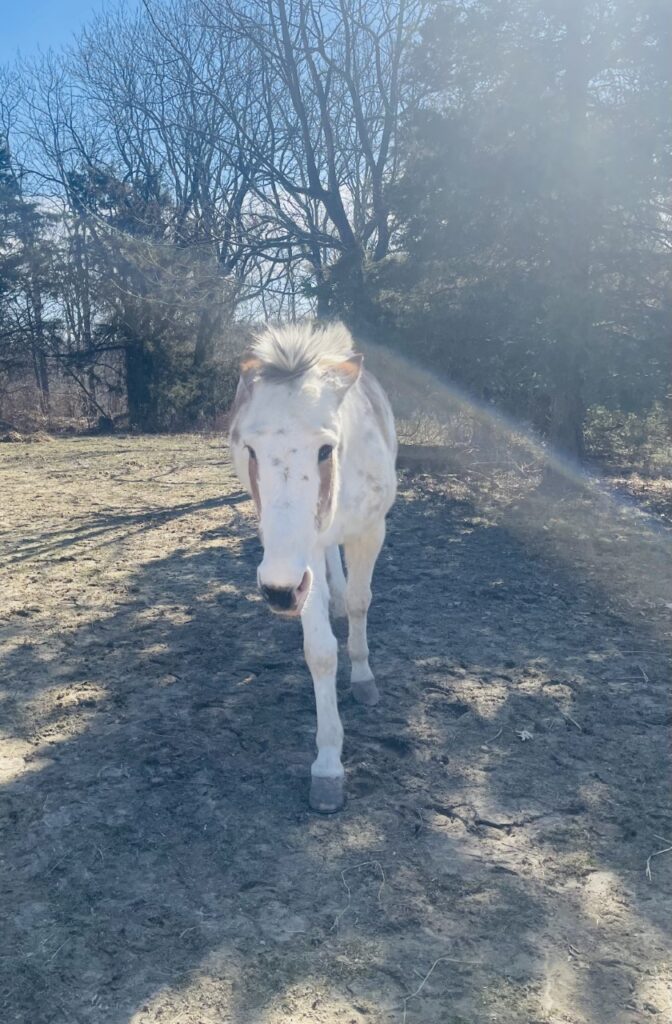
The mule in the photo, “Cabo” is walking towards me after I called her name. Cabo is very expressive and reading her body language has been very interesting and a huge learning curve in my working with mules over the years. Horse people typically misread this expression as being unhappy or aggressive and even as a sign of confusion. This mule has been heavy-handed by a trainer that broke her out several years ago. The mare mule is very smart and learning her body language has been fascinating to me.
Having figured out Cabo’s past handling has enabled me to realize that this facial expression is more of submission, saying I am coming to you. Her head is lowered, her lower lip is relaxed and her ears are gently laying down – not pinned back as you would expect in an angry mule or horse.
Of course, after Cabo walks up to me, I place the rope halter on her first, and then she gets a graham cracker as a reward. I then bring her through the gate to saddle up and go to work.
A recent blurb from Lea Lansade, PhD, at the French Horse and Riding Institute in The Horse newsletter, explains:
Much equine research has focused on the communication of negative emotions. It’s time to give thought to what constitutes the expression of positive emotions in horses, says Lansade. And that, she says, we can see in their “smiles.”
“Horses have relatively complex facial muscles that allow them to have a wide variety of facial expressions, almost what we’d see in most primates,” Lansade says. “As scientists, we can’t really use the words ‘smile’ or ‘happy’ referring to animals, but when you look at the facial expression of a horse with positive emotions, that’s essentially what we’re seeing.”
Happy horses create the “equine smile” by half-closing their eyes, stretching out their upper lips, and pointing their ears backward, almost in line with the nose, she says, based on a new study her team just released about desirable grooming techniques. Sometimes they keep the upper lip still; sometimes they twitch it a bit. In combination with that smile, they usually lift or tilt their necks slightly.
“It’s not enough to avoid negative emotions in our horses; we need to be actively seeking signs of positive emotions, as well,” Lansade says. “If we can read their body language, we can recognize what makes them happy.”
